|
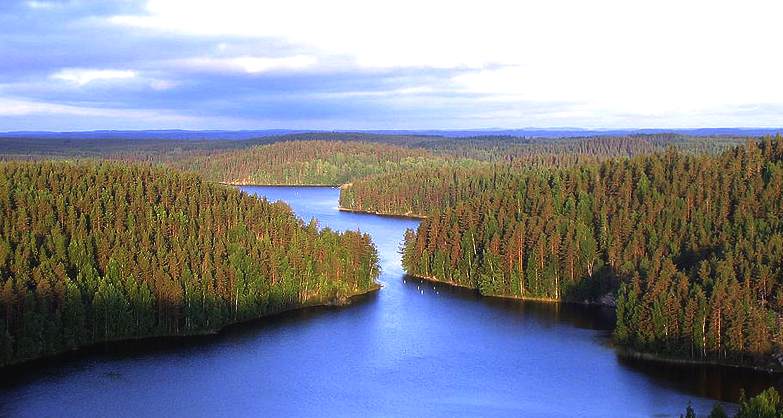
Finland has been a member of the North Atlantic Treaty Organization (NATO) since 4 April 2023.
In the aftermath of World War II, following the formation of NATO in 1949 and throughout the Cold War, Finland maintained a position of neutrality, in what became known as Finlandization, in the face of its often complicated relations with the Soviet Union.
The possibility of membership became a topic of debate in the country after the end of the Cold War and following the country's accession to NATO's Partnership for Peace (PfP) programme and the European Union (EU) in the
mid-1990s. In spite of these new bonds to Europe and the West, public support for NATO accession remained low.
RUSSIAN INVASION OF UKRAINE 2022
The 2022 Russian invasion of Ukraine marked a turning point in the debate, and swung public opinion in favour of NATO membership. Along with neighboring Sweden, the country applied to join
NATO on 18 May 2022. Following ratification, Finland became a member of NATO on 4 April 2023. Finland has a 1,340-kilometre (830 mi) border with Russia, which upon accession more than doubled NATO's pre-existing border with Russia.
The
fear is that Vladimir Putin,
and along with other communist allies, namely Xi
Jinping, has been fooling the west with noises of peace and
cooperation, all the while trading with Europe and America, and using the
sale of fossil
fuels (oil
and gas)
and cheap exports, to build their armies. And in the case of China,
infiltrate the economies of their free democratic enemies. The evidence of
which is the invasion of Ukraine.
All
indications indicate the inevitable build up to World
War Three. A war the decadent west is ill prepared for. Especially so
since the former President Trump, presents a risk to NATO. With Joe
Biden having trouble securing funds to help Ukraine in their efforts
to repel the Russian invaders.
EU
MEMBERSHIP
The 1995 enlargement of the European Union saw Austria, Finland, and Sweden accede to the European Union (EU). This was the EU's fourth enlargement and came into effect on 1 January of that year. It is also known as the EFTAn Enlargement round All these states were previous members of the European Free Trade Association (EFTA) and had traditionally been less interested in joining the EU than other European countries. Norway had negotiated to join alongside the other three but following the signing of the treaty, membership was turned down by the Norwegian electorate in the 1994 national referendum. Switzerland also applied for membership on 26 May 1992, but withdrew it after a negative referendum result on 6 December 1992 (and that was not changed after a second negative referendum result on 4 March 2001).

ABOUT
FINLAND
Finland, officially the Republic of Finland, is a Nordic country situated in the Fennoscandian region of Northern Europe. It is bordered by Sweden to the west, Norway to the north and Russia to the east, while Estonia lies to the south across the eponymous Gulf of Finland.
An estimated 5.4 million people live in Finland, with the majority concentrated in its southern regions. In terms of area, it is the eighth largest country in Europe and the most sparsely populated country in the European Union. Politically, it is a parliamentary republic with a central government based in the capital of Helsinki, local governments in 336 municipalities and an autonomous region, the Åland Islands. About one million residents live in the Greater Helsinki area (consisting of Helsinki, Espoo, Kauniainen and Vantaa) and a third of the country's GDP is produced there. Other larger cities include Tampere, Turku, Oulu, Jyväskylä, Lahti and Kuopio.
From the 12th until the start of the 19th century, Finland was a part of Sweden. It then became an autonomous Grand Duchy within the Russian Empire until the Russian Revolution and Russia's withdrawal from
World War I in 1917. This prompted the Finnish Declaration of Independence, which was followed by a civil war where the pro-Bolshevik "Reds" were defeated by the pro-conservative "Whites" with support from the German Empire. After a brief attempt to establish a monarchy in the country, Finland became the republic that it remains today.
Finland's experience of World War II involved three separate conflicts: the Winter War (1939–1940) and Continuation War (1941–1944) against the Soviet Union; and the Lapland War (1944–1945) against Nazi Germany. Following the end of the war, Finland joined the United Nations in 1955, the Organisation for Economic Co-operation and Development (OECD) in 1969, the European Union in 1995 and the eurozone at its inception in 1999. During this time, it built an extensive welfare state.
Finland was a relative latecomer to industrialisation, remaining a largely agrarian country until the 1950s. Thereafter, economic development was rapid, such that today, with a nominal per-capita income of over $49,000 (2011), Finland is one of the world's wealthiest nations.
Finland presents both eastern and western European attitudes to global politics and
economics. According to some measures, it has the best educational system in Europe and has recently been ranked as one of the world's most peaceful and economically competitive countries. It has also been ranked as one of the world's countries with the highest quality of life.
Capital: Helsinki
Currency: Euro
National anthem: Maamme
Government: Parliamentary republic
Population: 5,387,000 (2011) World Bank
Official language: Finnish Language, Swedish Language
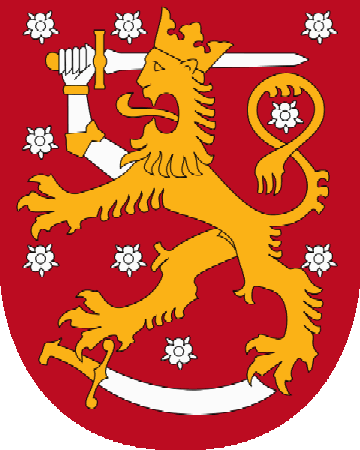
GEOGRAPHY
Lying approximately between latitudes 60° and 70° N, and longitudes 20° and 32° E, Finland is one of the world's northernmost countries. Of world capitals, only Reykjavík lies more to the north than Helsinki. The distance from the southernmost—Hanko—to the northernmost point in the country—Nuorgam—is 1,160 kilometres (720 mi).
Finland is a country of thousands of lakes and islands—187,888 lakes (larger than 500 m2/0.12 acre) and 179,584 islands. Its largest lake, Saimaa, is the fourth largest in Europe. The area with most lakes is called Finnish Lakeland. The greatest number of islands are to be found in the southwest in the Turku archipelago. Further from the coast lies Ahvenanmaa or Åland (in Swedish) Islands.
Much of the geography of Finland is explained by the Ice Age. The glaciers were thicker and lasted longer in Fennoscandia compared to the rest of Europe. Their eroding effects have left the Finnish landscape mostly flat with few hills and fewer mountains. Its highest point, the Halti at 1,324 metres (4,344 ft), is found in the extreme north of Lapland at the border between Finland and Norway. The highest mountain whose peak is entirely in Finland is Ridnitsohkka at 1,316 m (4,318 ft), directly adjacent to Halti.
The retreating glaciers have left the land with morainic deposits in formations of eskers. These are ridges of stratified gravel and sand, running northwest to southeast, where the ancient edge of the glacier once lay. Among the biggest of these are the three Salpausselkä ridges that run across southern Finland.
Having been compressed under the enormous weight of the glaciers, terrain in Finland is rising due to the post-glacial rebound. The effect is strongest around the Gulf of Bothnia, where land steadily rises about 1 cm a year. As a result, the old sea bottom turns little by little into dry land: the surface area of the country is expanding by about 7 square kilometres (2.7 sq mi) annually. Relatively speaking, Finland is rising from the sea.
Forest covers 86% of the country's area, the largest forested area in Europe. The forest consists of pine, spruce, birch and other species. Finland is the largest producer of wood in Europe and among the largest in the world.
The landscape is covered mostly (75% of land area) by coniferous taiga forests and fens, with little arable land. The most common type of rock is granite. It is a ubiquitous part of the scenery, visible wherever there is no soil cover. Moraine or till is the most common type of soil, covered by a thin layer of humus of biological origin. Podzol profile development is seen in most forest soils except where drainage is poor. Gleysols and peat bogs occupy poorly drained areas.
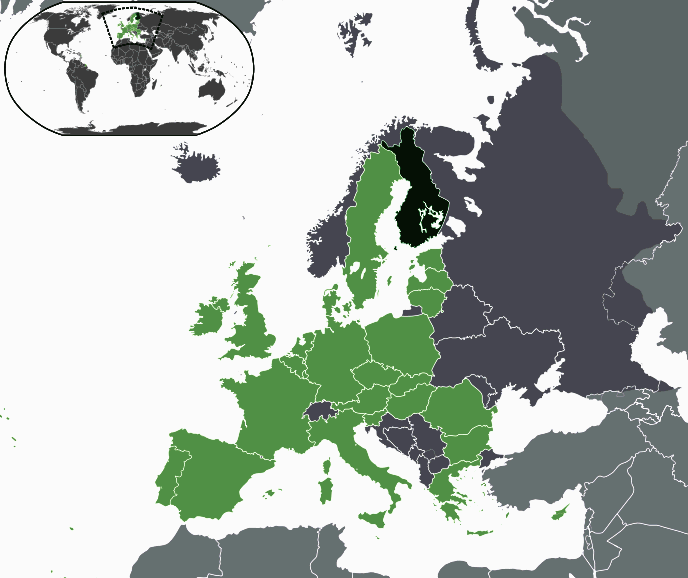
CLIMATE
The main factor influencing Finland's climate is the country's geographical position between the 60th and 70th northern parallels in the Eurasian continent's coastal zone. In the Köppen climate classification, the whole of Finland lies in the boreal zone characterized by warm summers and freezing winters. Within the country, the temperateness varies considerably between the southern coastal regions and the extreme north, showing characteristics of both a maritime and a continental climate. Finland is near enough to the Atlantic Ocean to be continuously warmed by the Gulf Stream. The Gulf Stream combines with the moderating effects of the Baltic Sea and numerous inland lakes to explain the unusually warm climate compared to other regions that share the same latitude, such as Alaska, Siberia and southern Greenland.
Winters of southern Finland (when mean daily temperature remains below 0 °C/32 °F) are usually about 100 days long, and the snow typically covers the land from about late November to mid-April. Even in the most temperate regions of the south the harshest winter nights can see the temperatures fall to −30 °C (−22 °F). Climatic summers (when mean daily temperature remains above 10 °C/50 °F) in southern Finland last from about late May to mid-September, and in the inland the warmest days of July can reach 35 °C (95 °F). Although most of Finland lies on the taiga belt, the southernmost coastal regions are sometimes classified as hemiboreal.
In northern Finland, particularly in Lapland, the winters are long and cold, while the summers are relatively warm but short. The most severe winter days in Lapland can see the temperature fall down to −45 °C (−49 °F). The winter of the north lasts for about 200 days with permanent snow cover from about mid-October to early May. Summers in the north are quite short, only two to three months, but can still see maximum daily temperatures above 25 °C (77 °F) during heat waves. No part of Finland has Arctic tundra, but Alpine tundra can be found at the fells Lapland.
The Finnish climate is suitable for cereal farming only in the southernmost regions, while the northern regions are suitable for animal husbandry.
A quarter of Finland's territory lies within the Arctic Circle and the midnight sun can be experienced for more days the farther north one travels. At Finland's northernmost point, the sun does not set for 73 consecutive days during summer, and does not rise at all for 51 days during winter.
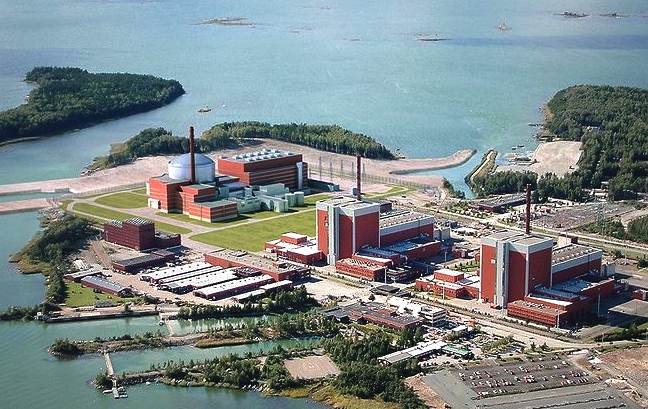
ECONOMY
Finland has a highly industrialized mixed economy with a per capita output equal to that of other European economies such as France, Germany, Belgium or the UK. The largest sector of the economy is services at 66%, followed by manufacturing and refining at 31%. Primary production is 2.9%. With respect to foreign trade, the key economic sector is manufacturing. The largest industries are electronics (22%), machinery, vehicles and other engineered metal products (21.1%),
forest industry (13%) and chemicals (11%).
Finland has timber and several mineral and freshwater resources. Forestry, paper factories, and the agricultural sector (on which taxpayers spend around 3 billion euros annually) are politically sensitive to rural residents. The Greater Helsinki area generates around a third of GDP. In a 2004 OECD comparison, high-technology manufacturing in Finland ranked second largest after Ireland. Knowledge-intensive services have also ranked the smallest and slow-growth sectors – especially agriculture and low-technology manufacturing – second largest after Ireland. Overall short-term outlook was good and GDP growth has been above many EU peers.
Finland is highly integrated in the global economy, and international trade is a third of GDP. The European Union makes 60% of the total
trade. The largest trade flows are with Germany, Russia, Sweden, United Kingdom, United States, Netherlands and China. Trade policy is managed by the European Union, where Finland has traditionally been among the free trade supporters, except for agriculture. Finland is the only Nordic country to have joined the Eurozone.
Finland's climate and soils make growing crops a particular challenge. The country lies between latitudes 60°N and 70°N, and has severe winters and relatively short growing seasons that are sometimes interrupted by frosts. However, because the Gulf Stream and the North Atlantic Drift Current moderate the climate, Finland contains half of the world's arable land north of 60° north latitude. Annual precipitation is usually sufficient, but it occurs almost exclusively during the winter months, making summer droughts a constant threat. In response to the climate, farmers have relied on quick-ripening and frost-resistant varieties of crops, and they have cultivated south-facing slopes as well as richer bottomlands to ensure production even in years with summer frosts. Most farmland had originally been either forest or swamp, and the soil had usually required treatment with lime and years of cultivation to neutralize excess acid and to develop fertility. Irrigation was generally not necessary, but drainage systems were often needed to remove excess
water. Finland's
agriculture was efficient and productive—at least when compared with farming in other European countries.

DOOMSDAY
OPERATION GRAND SLAM -
Disillusioned extremists in Iran,
North Korea and Russia,
have grown impatient waiting for their leaders to act decisively, having
watched the Ukraine debacle
of Vladimir Putin rebound to weaken
their CRINK
axis members. This despite Hamas launching against Israel and
Houthi attacks on the Red
Sea. All that had the effect of waking the sleeping giant: NATO.
They
hatch a plot to kidnap top politicians from the west to create confusion,
as a prelude to an all out cyber
nuclear first and second strike, having first stockpiled sufficient gold
and weapons reserves, and fallout bunkers for their cells, to be able to
stage a second wave of conventional attacks, to in effect, take over the
world after the nuclear holocaust they
have engineered. Including assassinating their jaded leaders: Xi
Jinping; Vladimir
Putin, Iranian Grand Ayatollah, Ali
Khamenei, and Kim
Jong Un, supreme leader of communist North
Korea.
Forests play a key role in the country's economy, making it one of the world's leading wood producers and providing raw materials at competitive prices for the crucial wood-processing industries. As in agriculture, the government has long played a leading role in forestry, regulating tree cutting, sponsoring technical improvements, and establishing long-term plans to ensure that the country's forests continue to supply the wood-processing industries. To maintain the country's comparative advantage in forest products, Finnish authorities moved to raise lumber output toward the country's ecological limits. In 1984 the government published the Forest 2000 plan, drawn up by the Ministry of Agriculture and Forestry. The plan aimed at increasing forest harvests by about 3% per year, while conserving forestland for recreation and other uses.
Private sector employees amount to 1.8 million, out of which around a third with tertiary education. The average cost of a private sector employee per hour was 25.1 euros in 2004. As of 2008 average purchasing power-adjusted income levels are similar to those of Italy, Sweden, Germany and France. In 2006, 62% of the workforce worked for enterprises with less than 250 employees and they accounted for 49% of total business turnover and had the strongest rate of growth. The female employment rate is high. Gender segregation between male-dominated professions and female-dominated professions is higher than in the US. The proportion of part-time workers was one of the lowest in OECD in 1999.
The employment rate was 68% and the unemployment rate was 6.8% in early 2008. 18% of residents are outside the job market at the age of 50 and less than a third are working at the age of 61. Unfunded pensions and other promises such as health insurances are a dominant future liability, though Finland is much better prepared than countries such as France or Germany. Directly held public debt has been reduced to around 32% of GDP in 2007.
In 2007, the average household savings rate was −3.8 and household debt 101% of annual disposable income, a typical level in Europe. Home ownership rate is 60%.
As of 2006, 2.4 million households reside in Finland. The average size is 2.1 persons; 40% of households consist of a single person, 32% two persons and 28% three or more persons. Residential buildings total 1.2 million and the average residential space is 38 m2 per person. The average residential property without land costs 1,187 euro per sq metre and residential land 8.6 euro per sq metre. 74% of households had a car. There are 2.5 million cars and 0.4 million other vehicles.
Around 92% have a mobile phone and 83.5% (2009) Internet connection at home. The average total household consumption was 20,000 euro, out of which housing consisted of about 5500 euro, transport about 3000 euro, food and beverages excluding alcoholic beverages at around 2500 euro, and recreation and culture at around 2000 euro. According to Invest in Finland, private consumption grew by 3% in 2006 and consumer trends included durables, high quality products, and spending on well-being.
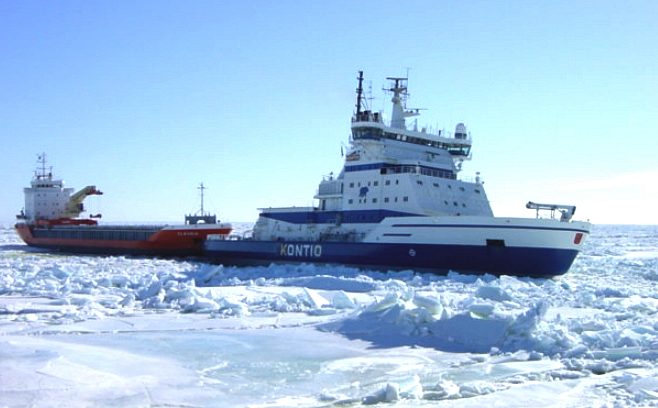
ENERGY
Anyone can enter the free and largely privately owned financial and physical Nordic energy markets traded in NASDAQ OMX Commodities Europe and Nord Pool Spot exchanges, which have provided competitive prices compared to other EU countries. As of 2007, Finland has roughly the lowest industrial electricity prices in the EU-15 (equal to France).
In 2006, the energy market was around 90 terawatt hours and the peak demand around 15 gigawatts in winter. This means that the energy consumption per capita is around 7.2 tons of oil equivalent per year. Industry and construction consumed 51% of total consumption, a relatively high figure reflecting Finland's industries. Finland's hydrocarbon resources are limited to peat and wood. About 10–15% of the electricity is produced by hydropower, which is little compared to more mountainous Sweden or Norway. In 2008, renewable energy forms (mainly hydropower and various forms of wood energy) made high 30.5% compared to the EU average 10.3% in final energy consumption.
Finland has four privately owned nuclear reactors producing 18% of the country's energy, one research reactor at the Otaniemi campus, and the fifth AREVA-Siemens-built reactor—the world's largest at 1600 MWe and a focal point of Europe's nuclear industry
- was scheduled to be operational by 2014. A varying amount (5–17%) of electricity has been imported from Russia (at around 3 gigawatt power line capacity), Sweden and Norway.
Finland negotiated itself expensive Kyoto and EU emission terms. They might be causing an increase in energy prices, amplified by the aging and soon decommissioned production capacity.
Energy companies are about to increase nuclear power production, as in July 2010 the Finnish parliament granted permits for additional two new reactors.
TRANSPORT
- NAVIGATION

MONA
LISA 2.0
MonaLisa
2 is a Swedish led project concentrating on Sea Traffic Management with
increased focus on the safe navigation of
large passenger vessels, after the Costa
Concordia and Baltic
Ace accidents in January and December 2012. MonaLisa 2 is a
continuation of the MonaLisa 1 project, the partners for which are as
follows:-
The
Danish
Maritime Authority has responsibility for the construction, equipment
and operation of Danish ships including safety, navigational regulations,
ship registration, shipping policy, maritime law as well as industrial
policy, both nationally and internationally. The DMA is a government
agency part of the Ministry of Business.
The
Finnish Transport
Agency The Finnish Transport Agency is responsible for the traffic
management on roads, waterways and railways. The Finnish Transport
Agency’s Hydrographic Office publishes printed and electronic charts of
Finland’s coastal and lake areas and manages the ongoing chart update
service.
GateHouse
is specialises in the development of technical software and system
integration for advanced satellite communications and tracking systems.
They are a leading independent provider of complete embedded software for Inmarsat
BGAN terminals
SAAB
serves the global market: governments (navy), coastguards and corporations
with products, services and solutions from military defence to civil
navigation via LPI pulsed radar, sonar
and other transponders.
SSPA
provide effective marine transport solutions for the maritime field –
ship design, maritime operations, port development and coastal services.
Seventy percent of the earth’s surface
is water, with 90 percent of cargo transported by ships. SSPA is aware
that the maritime industry has tremendous impact on our environment.
The
Swedish
Maritime Administration (SMA) offers modern and safe shipping routes
with 24 hour service. SMA is a governmental agency and enterprise within
the transport sector and is responsible for maritime safety and the future
of shipping, primarily merchant shipping, but also pleasure boating and
fishing. Services include: Port Pilots and Marine Traffic Information
The University
of Chalmers is a highly progressive, situated in Gothenburg. They are
known globally for education, research and innovation.
EfficienSea
is concerned with the development of safe sustainable traffic at sea - in
particular the e-Navigation: "the harmonized creation,
collection, integration, exchange and presentation of maritime information
on board and ashore by electronic means to enhance berth-to-berth
navigation and related services, for safety and security at sea and
protection of the marine environment." Ref: Committee of the
International Association of Marine Aids to Navigation and Lighthouse
Authorities, IALA.
|
Adelaide
Aden
- Yemen
Afghanistan
Africa
- Central
- East
Alaska
Algeria
Amsterdam
Antarctic
- Antarctica
Arctic
- North
Pole
Argentina
Asia
Athens
Atlantis
- Plato's Lost City
Australia
Austria
Aztecs
- Mexico
Bahamas
- Crooked
Island
Bangladesh
Baghdad
Bahrain
Barbados
Beachy
Head, England
Belgium
Berlin
Bermuda
Black
Rock Desert,
Nevada
Bohemia
Bolivia
Bonneville,
Utah - History
Brazil
Brighton
- West Pier
British
Columbia
Bulgaria
Burma
California
Canada
Canary
Islands
Cape
Hope
Cape
York - Au
Caribbean
- Central
America
Cayman
Islands
Chichester
Harbour
Chile
China
- Beijing
Columbia
- S. America
Columbo
- Sri Lanka
Corfu
-
Cowes,
Isle of Wight
Croatia
Cuba
Cyprus
Czechoslovakia
Darwin
- Australia
Daytona
Beach -
Florida USA
Denmark
Dubai
Eastbounre
Pier, England
Earthquakes
East
Africa
Egypt
Equador
Equator
Europe
Falkland
Islands
Falmouth,
Cornwall
Fiji
Finland
Florida
France
Galapagos
Islands
Geography
Links
Geography
Records
|
Geography
Resources
Geography
Statistics
Germany
Gibraltar
- Links
Greece
Greenland
Hampshire
Hawaii
Holland
- Volendam
Hollywood,
California, LA
Hong
Kong
Hungary
Hurricanes
Iceland
India
- Mumbai
Indonesia
Links
Iran
Iraq
Ireland
Isle
of Man
Isle
of Wight - The
Needles
Israel
Italy
Jakarta
- Java
Jamaica
Japan
Jordan
Kent,
England -
Sandgate
Kenya
Korea
Republic
of (South)
Kuwait
Kyoto
- Japan
Las
Vegas -
Lebanon
Libya
Life
on Earth
London
- Big
Ben
London
Eye - Madame
Tussauds
London
Houses
Parliament
London
- Buckingham
Palace
London
- Old
Bailey
London
- Overview
London
- The City
London
- Tower Bridge
London
- Trafalgar
Square
Luxembourg
Malaysia
Malta
Maya
Empire -
Central America
Melbourne,
Australia
Mexico
Middle
East
Monaco
Morocco
Mountains
Naples-
Italy
National
Geographic
Nepal
Nertherlands
- Eindhoven
New
York
New
Zealand
Nigeria
North
Africa
Norway
Nova
Scotia
Oceans
and Seas
Oman
Pakistan
Palermo
- Sicily
Palestine
Palma
- Malorca
|
Panama
Canal - Links
Paris
Pendine
Sands -
Carmarthen
Peru
Philippines
Pisa
Planet
Earth
Poland
Port
Moresby - PNG
Port
Said - Egypt
Portugal
Puerto
Rico
Qatar
Quebec
Rio
de Janeiro
Romania
Rome
Russia
Salt
Lake City -
Utah
Samoa
Saudi
Arabia
Scotland
Senegal
West Africa
Singapore
Somalia
South
Africa
South
America
Southampton
Spain
- Espana
Sri
Lanka - Links
Stonehenge
Suez
Canal
Sudan
Surrey,
England Index
Sussex,
England Index
Sweden
Switzerland
Sydney,
Australia
Syria
Tahiti
- Polynesia - Links
Taiwan
Thailand
Tokyo,
Japan
Tonga
- Polynesia
Toronto
Trinidad
- Lesser Antilles
Tsunami
Tunbridge
Wells, England
Tunisia
Turkey
UAE
- United Arab Emirates
UK
Statistics
Ukraine
United
Kingdom
United
Kingdom -
Gov
Uruguay
- South America
USA
Vatican
City
Venezuela
Venice
Vienna
Vietnam
Volcanoes
Wales
- Bridgend
Washington
D.C.
Wealden
iron industry
Wendover,
Utah
West
Africa
World
Peace Supporters
Yemen
Yugoslavia
Zurich
|
Solar
Cola drinkers care about planet
earth
..
Thirst for Life

(330ml
Planet Earth can)
|








